Romantic, haunting, and fascinating—these crumbling structures are a sight to behold. Imagine the extravagance that once filled the halls of these beautiful abandoned castles. From royal ruins to deserted palaces, here are nine of the most gorgeous abandoned castles in the world.
Caerlaverock Castle
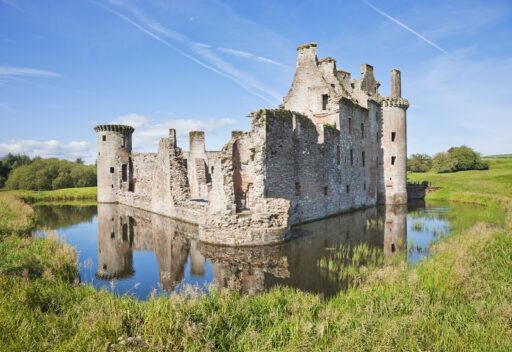
Scotland
This moated medieval masterpiece was first built in the 13th century on the southern coast of Scotland. The unique triangular layout of the building was brilliantly defensive. The curtain-walls double-back on themselves, and at each corner of the triangle there’s a tower that acts as a look-out point. The front point of the triangle faces north towards Scotland and has a double-tower, which forms the gatehouse. This would have included the prestigious accommodations of the castle’s residents, the Maxwell family. After being abandoned in the 17th century, the site is now open to the public to explore.
Ballcarbery Castle
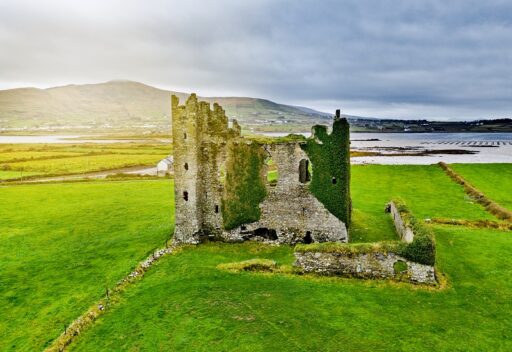
Ireland
There was some type of residence situated on the site of this castle as early as 1398 however the present ruins were constructed in the 16th century. The stone walls are all that remain of this ivy-clad structure near the water’s edge in County Kerry. The edifice was severely damaged in the mid-1600s when Oliver Cromwell’s troops attacked it with cannon fire; local farmers subsequently took some stones for their own building projects.
Sammeszzano Castle
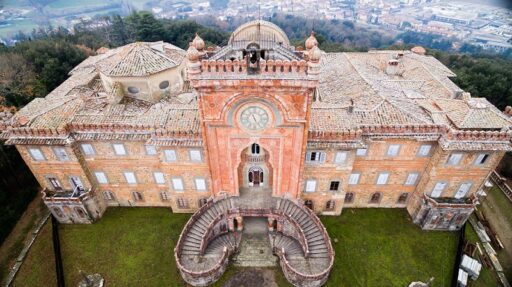
Italy
Venture just outside of Florence to this grand hilltop palazzo. Built on the grounds of a royal palace from the 17th century, Marquis Ferdinando Ximenes Panciatichi remodeled the site in the late 19th century into a Moorish Revivalist style. To say that this castle is ornate and elaborate is an understatement. It’s 365 rooms—that’s one for each day of the year—are full of dazzling color and detailed patterns including the incredible Peacock Room, which boasts a rainbow of colors and geometries. After World War II, this castle was turned into a luxury hotel until it closed in the 1990s.
Dunnottar Castle
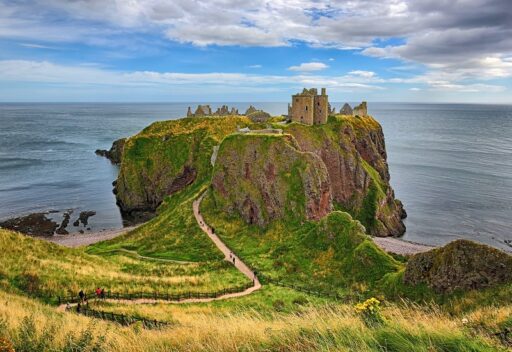
Scotland
Perched on a cliff above the North Sea sits the windswept Dunnottar Castle. The site is believed to have been fortified in the Early Middle Ages however the surviving buildings are largely of the 15th and 16th centuries. Its many residents over the years include the 4th Earl Marischal, a guardian of Mary, Queen of Scots, who was thought to be the wealthiest man in Scotland at the time. After many dramatic centuries’ worth of battles and betrayals, the castle was confiscated by the government in the 18th century. It was abandoned and left in ruins until 1925 when an English viscountess undertook its restoration. While it is privately owned, it is now open to the public to enjoy.
Bannerman Castle
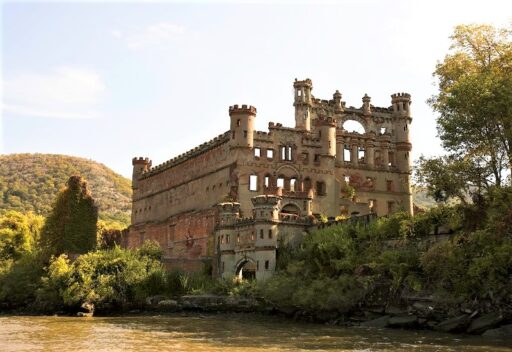
United States
Travel 60 miles north of Manhattan and you’ll arrive at Bannerman’s Castle which is located on a small island in the middle of the Hudson River. The castle was erected in 1901 to house businessman Francis Bannerman’s military goods—the Bannermans owned millions of rounds of ammunition, having bought up mass quantities of military weaponry in the wake of the Civil and Spanish-American Wars. There’s also a separate, smaller castle on the island that was used as the family’s summer residence, but the large building, which can be seen from the river, was ideal for Bannerman to advertise his business. Look closely and you’ll see “Bannerman’s Island Arsenal” on the exterior wall! Soon after his death in 1918, a munitions explosion partially destroyed the complex, while a fire in 1969 left it in ruins.
Gwrych Castle
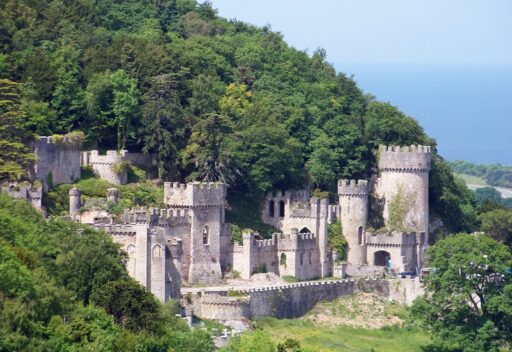
Wales
Used as his private residence, this Gothic-style castle was built between 1810 and 1825 by Lloyd Hesketh Bamford-Hesketh in memory of his mother. It had a total of 128 rooms, including 28 bedrooms, an outer hall, an inner hall, two smoke rooms, a dining room, a drawing room, a billiards room, an oak study, and a range of accommodations for servants. During World War II, it housed 200 Jewish refugees and was later open to the public for medieval reenactments. The castle was abandoned in the mid-1980s and the nine miles of walls are now covered in greenery and completely exposed to the environment. With 200 years of history, many of today’s visitors claim it’s haunted.
Pidhirtsi Castle
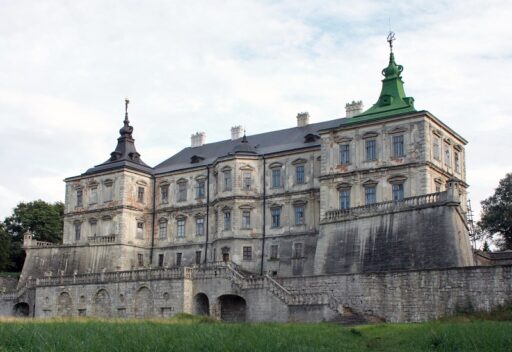
Ukraine
Once described as one of the most beautiful castles in Europe, Pidhirtsi entertained emperors and kings in its heyday. Constructed in the mid-17th century, it was truly a house of luxury; its owners amassed an impressive collection of art and sculpture and maintained French and English gardens. In the twentieth century, the castle fell into disrepair, eventually becoming a sanatorium for tuberculosis patients. A 1956 fire also caused major damage, however, restoration efforts began in 1997, and now parts of the castle host events and art showings.
Kilchurn Castle
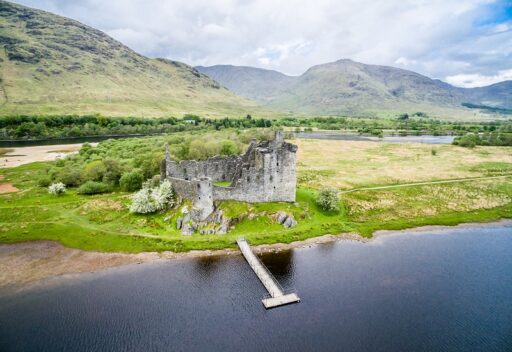
Scotland
Built in the mid-15th century by the Campbells of Glenorchy, the remains of Kilchurn Castle sit on a rocky peninsula at the northeastern end of Loch Awe. First used as a residence, the building later became a garrison during the Jacobite Rebellion. After the Campbells became Earls of Breadalbane in the early 1700s they moved to Taymouth Castle and shortly after Kilchurn was badly damaged by lightning. The 250-year-old ruins are open to the public in the summer months.
Matsumoto Castle

Japan
Surrounded by cherry blossoms and reflective water, Matsumoto Castle is a beautifully preserved piece of Japan’s architectural heritage. It was constructed in the 16th-century and the keep (fortified tower) still maintains its original wooden interiors and external stonework. The stronghold was also known as “Crow Castle” because its black walls and roofs looked like spreading wings. For 280 years, 23 lords of Matsumoto ruled from the castle until the abolition of the feudal system in the Meiji Restoration. The castle is listed as a National Treasure of Japan.


